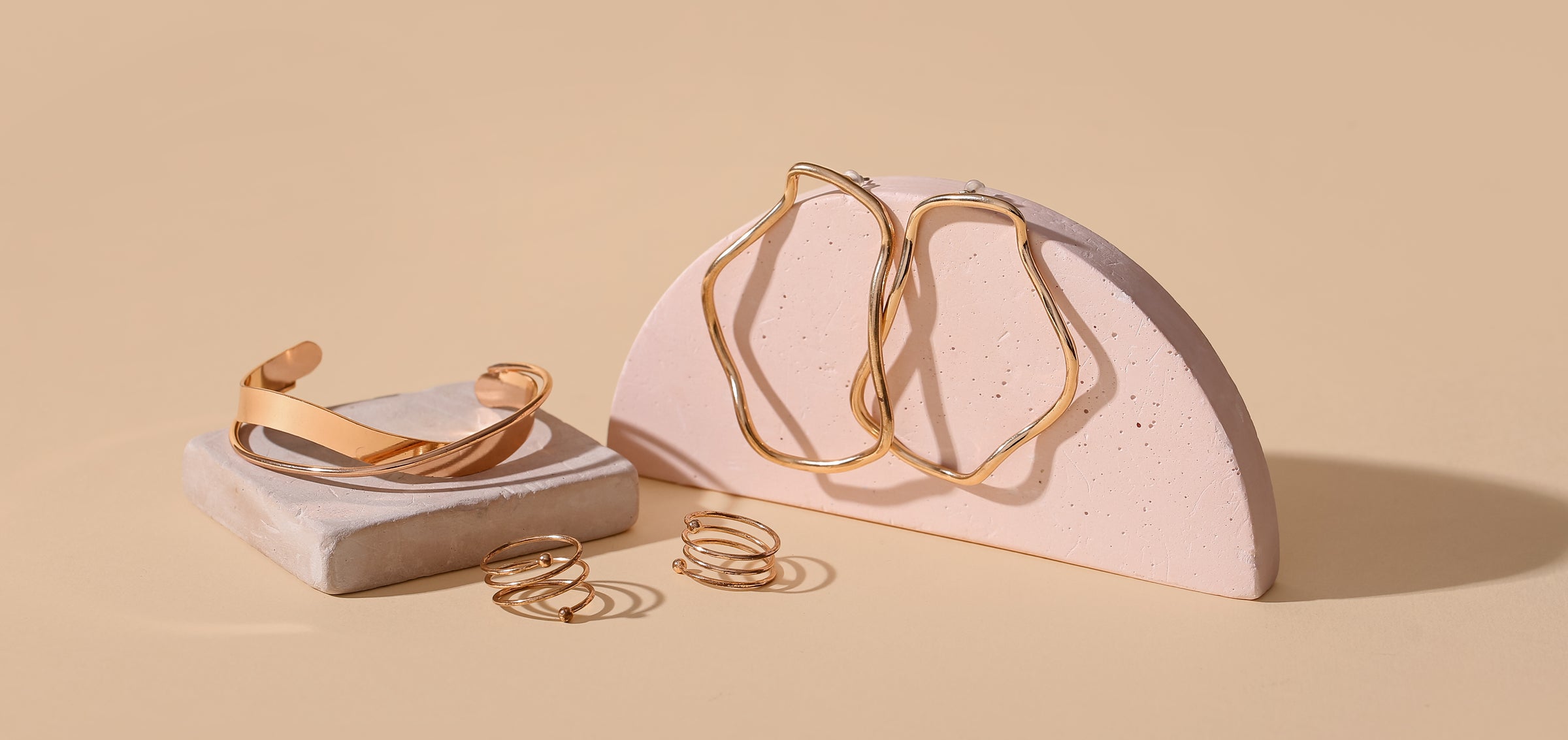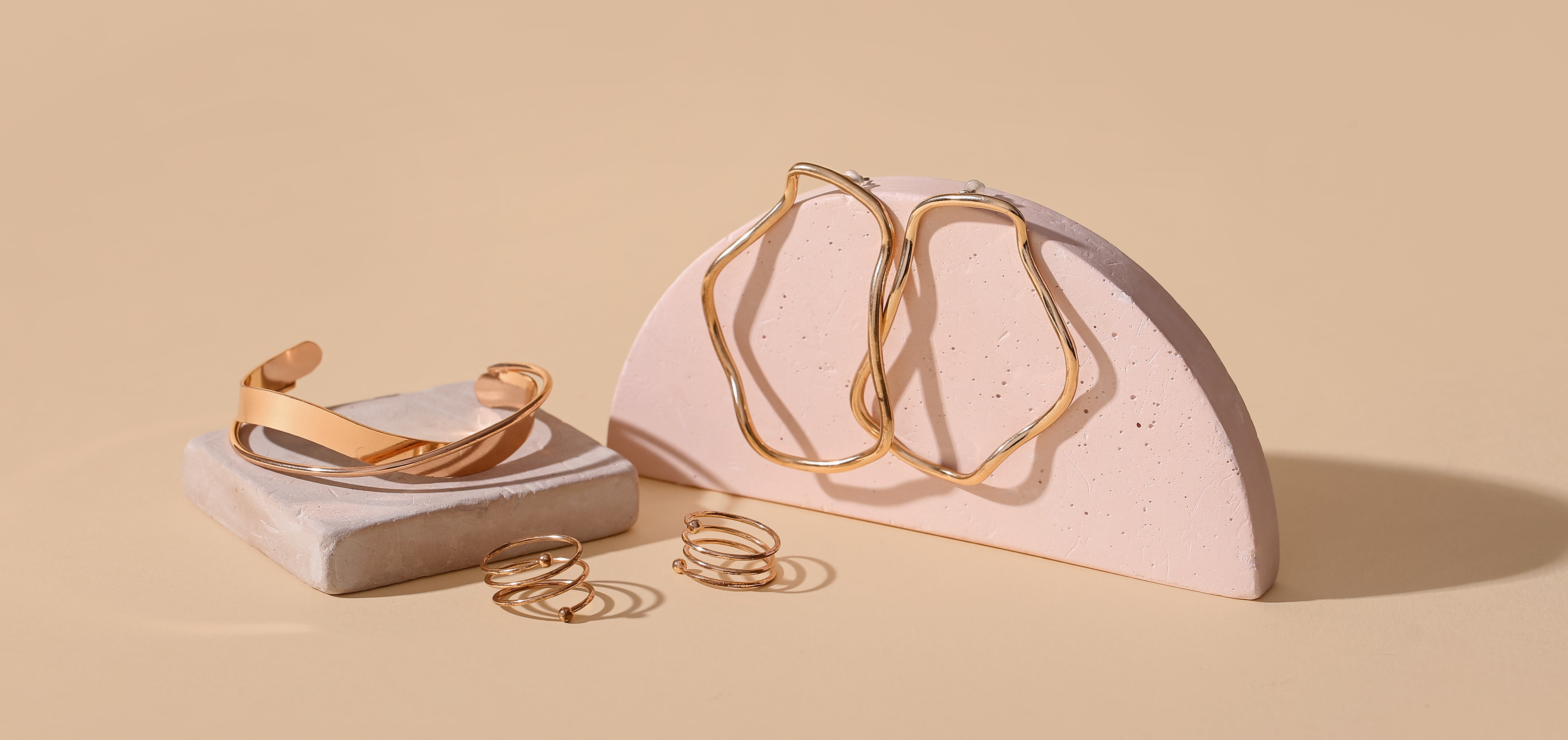Yes, gold-plated jewelry can tarnish over time. The thin gold layer can wear down, exposing the base metal underneath. When that happens, the base metal can react and darken. Sweat, lotions, perfume, and friction can speed this up. Taking good care of your gold-plated jewelry can significantly slow the effects of tarnishing.
Gold-plated jewelry can be an accessible way to enjoy the luxury of gold at a fraction of the cost. With proper care, it can last for months to years. Some ways you can take care of your gold-plated jewelry are to put it on last and to make sure it's dry when stored. Wipe with a soft cloth after wear. Take it off before water, workouts, and sleep. Re-plating later can make favorites look new again.
What is Gold Plated Jewelry?
Gold-plated jewelry has a thin layer of real gold. Makers bond it to a base metal using electricity. Many use brass or copper under the gold. Some use sterling silver. The karat of the gold layer can vary. Many brands choose 14k or 18k for a rich color.
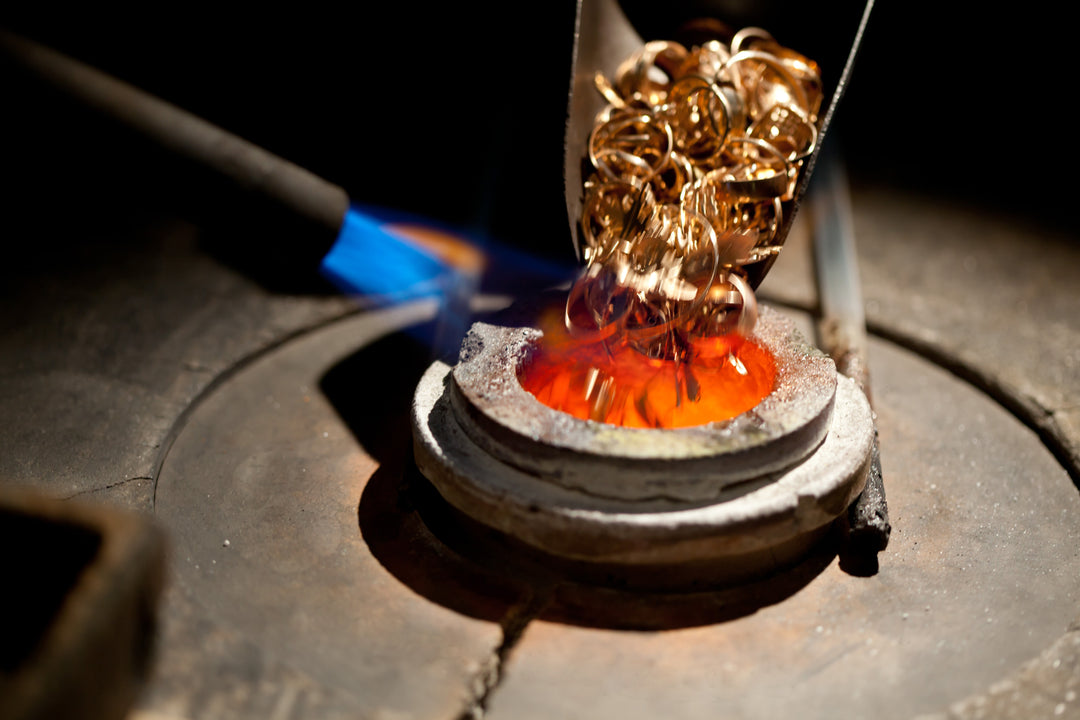
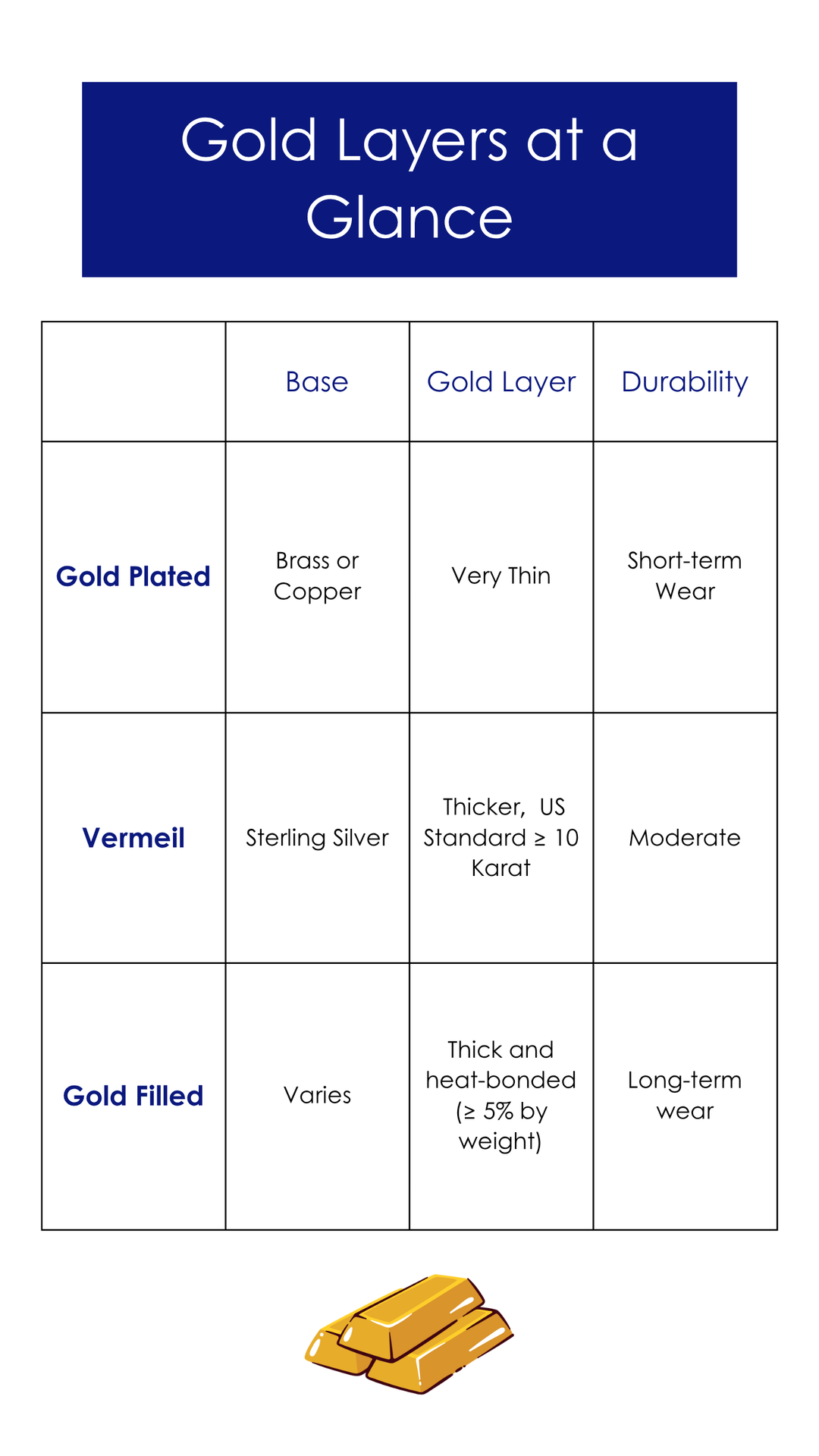
Gold Plated vs. Vermeil vs. Gold Filled
Here’s a simple guide that illustrates the differences between the gold layer and the base.
- Gold plated - A thin layer of gold over a base metal like brass or copper. “Gold electroplate” means at least about 0.175 microns of gold. “Gold plate” means about 0.5 microns. “Heavy gold plate” is about 2.5 microns. Thicker gold lasts longer.
- Vermeil - A sterling silver base with a thick gold layer. In the U.S., the gold must be at least 10k and about 2.5 microns thick. This gives more durability than standard plating.
- Gold filled - A much thicker layer of gold that is heat-bonded to the base metal. By law, the gold makes up at least 5% of the item’s total weight. You’ll often see “14/20,” which means 14k gold at 1/20 by weight. It wears longer than regular plating.
What Is Tarnishing?
Tarnishing happens when metals react with air, moisture, or chemicals on the skin. The reaction forms a thin film on the surface, which appears dull or dark. In gold-plated jewelry, tarnish appears when the gold layer wears thin and the base metal underneath reacts.
For example, copper can turn green, and silver can turn gray or black. Tarnish doesn’t weaken the jewelry right away, but if left untreated for a long time, it can lead to deeper corrosion and make the piece harder to restore.
Why Does Gold Plating Wear Away?
Gold plating wears away because the layer is thin and softer than the base metal below. Daily friction from skin, clothing, or hard surfaces can slowly rub it off. Chemicals in perfumes, lotions, soaps, or even sweat also weaken the layer.
Water speeds up the process by making the gold more likely to thin and expose the base metal. Thicker plating, like in vermeil or gold-filled jewelry, lasts longer than standard gold plating.

How Long Does Gold Plating Last?
The type of piece and how often you wear it are the two main factors that affect the longevity of gold plating. Rings and bracelets are high-friction pieces, while earrings and necklaces are low-friction. Then there’s wear frequency—everyday, occasional, or rare use—all of which affect how quickly the plating fades.
- Everyday wear and high-friction pieces (rings and bracelets): These items rub constantly against skin, clothing, and hard surfaces. Standard plating (under 0.5 microns) may last only 6–12 months before the base metal shows through.
- Occasional wear and high-friction pieces: Rings and bracelets worn less often will still show wear faster than other jewelry types, but they may last closer to 1–2 years before needing replating.
- Everyday wear and low-friction pieces (necklaces and earrings): These pieces don’t face as much rubbing. Even with daily wear, they can stay bright for a few years with proper care.
- Occasional wear and low-friction pieces: Necklaces or earrings worn only sometimes can last several years before fading, since they avoid both friction and constant exposure.
- Thicker plating (vermeil or heavy gold plate): Thicker gold layers withstand both friction and daily wear better. They can last a few years of regular use before fading. Gold filled, while technically different, can last decades.
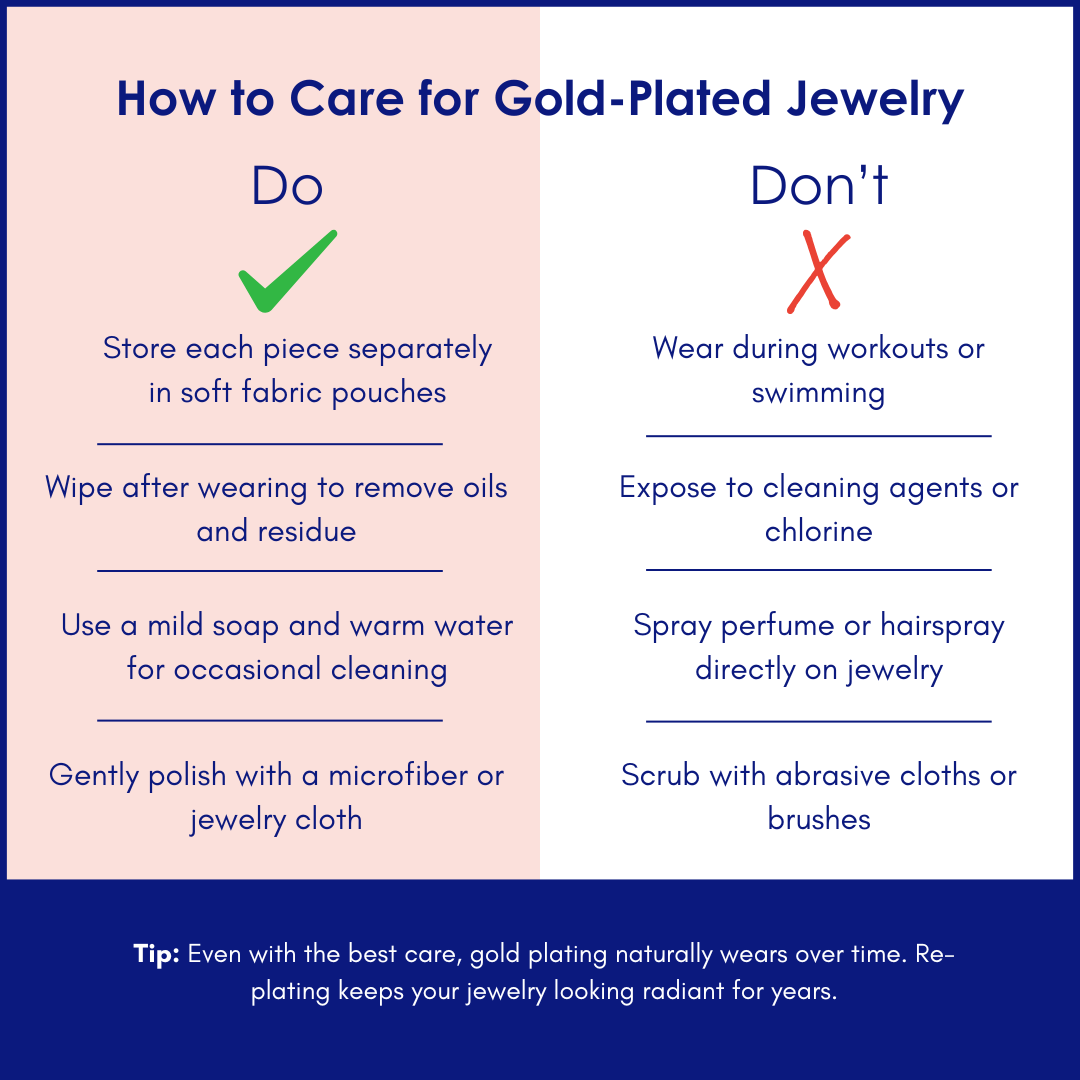
Care Tips to Slow Tarnish
- Keep jewelry dry and clean.
- Put it on after skincare, hair spray, and perfume.
- Remove before washing hands, swimming, or showering.
- Store pieces in soft pouches or separate boxes.
- Wipe gently with a soft cloth after each wear.
- Ask a jeweler about re-plating when the color looks dull.
FAQs About Gold Plated Jewelry
Can I Shower with Gold-Plated Jewelry?
It’s not recommended to wear your gold-plated jewelry in the shower. Water, soap, and shampoo can speed wear and dull the shine.
How Do I Clean Gold-Plated Jewelry?
Use a soft, dry cloth and wipe down gently. Avoid harsh cleaners and polishing pastes. They can rub off the thin gold layer.
Which Lasts Longer: Plated, Vermeil, or Gold-Filled?
Gold-filled usually lasts the longest. Vermeil often comes next. Regular gold plating needs the most care. The type of piece and how frequently you wear it are factors to consider, too.
What If My Piece Starts to Fade?
Bring it to a trusted jeweler. Re-plating can refresh the color and shine. The cost is usually modest, often less than replacing the piece, and many people choose to replate favorites every few years.
Is Gold Plated Jewelry Worth It?
Gold-plated jewelry offers style and versatility at an accessible price. It lets you enjoy the beauty of gold without the cost of solid gold pieces. The wide variety of designs makes it easy to try new trends, layer different looks, or keep a classic style fresh. With the right care, gold-plated jewelry can stay bright and beautiful for years, making it a wise choice for both everyday wear and special occasions.
Visit us in-store or shop our gold-plated jewelry collection online.


